
It’s June! When the soil has finally warmed, the threat of frost has (mostly) passed, and gardeners everywhere are itching to get their hands dirty! While your southern friends might be sweating through their second planting, you’re just hitting your stride in the garden sweet spot.
June planting in these cooler northern zones is all about timing – catching that perfect window when the soil is warm enough for heat-loving crops, but still leaving enough growing season for them to mature before fall frosts return. It’s like nature’s version of speed dating: “Quick, you’ve got about 90-110 days to meet, grow, and produce before frost crashes the party!”
I’ve carefully selected 10 plants that will thrive when planted in June in zones 4-6. These choices balance quick-maturing varieties with those that appreciate the warm soil June offers, while still having enough time to produce before your first fall frost. From speedy radishes to pumpkins that’ll be ready for Halloween, these plants are perfectly timed for June planting success.
So grab your trowel, slather on that sunscreen (because let’s face it, gardening in June means you’re finally getting some vitamin D after a long winter), and let’s dig into the perfect plants for your June garden!
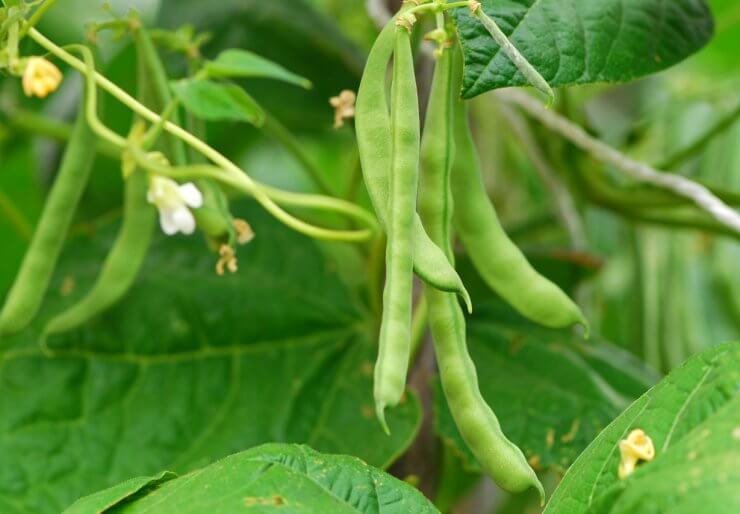
1. Bush Beans
Bush beans are the sprinters of the vegetable world, making them perfect for June planting in zones 4-6. Most varieties mature in just 50-60 days, giving you plenty of time before fall frosts arrive. They love the warm June soil, germinating quickly and growing vigorously without the need for trellising.
Recommended Varieties:
- ‘Provider’ (50 days) – Exceptionally reliable across all three zones
- ‘Contender’ (45 days) – Perfect for zone 4’s shorter season
- ‘Blue Lake 274’ (53 days) – Excellent canning bean for zones 5-6
- ‘Royal Burgundy’ (55 days) – Purple pods turn green when cooked; easier to see during harvest
Pro Tip: For a continuous harvest, plant bush beans every 2-3 weeks until early August. To prevent disease, avoid working with bean plants when they’re wet, and plant them in a different location than last year’s beans or peas. In zone 4, pre-warm your soil with black plastic for a week before planting to give them an extra head start.
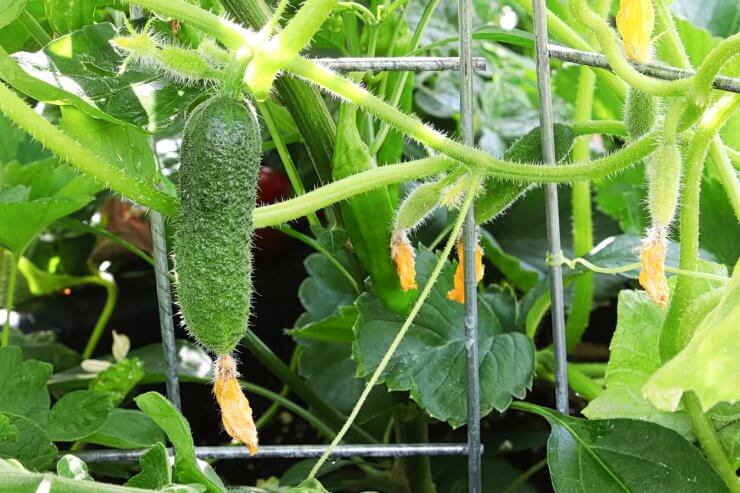
2. Cucumbers
Cucumbers love the warm soil June provides, and they’ll reward you with a bounty of crisp fruits in just 50-70 days. Their quick maturation time makes them ideal for June planting in these cooler zones.
Recommended Varieties:
- ‘Marketmore 76’ (60 days) – Disease-resistant slicing cucumber for all zones
- ‘Picklebush’ (52 days) – Compact bush variety perfect for containers or small spaces
- ‘Northern Pickling’ (48 days) – Excellent for zone 4 with very short seasons
- ‘Lemon’ (65 days) – Unique yellow, round cucumbers with sweet flavor for zones 5-6
Pro Tip: Plant cucumbers in mounds to ensure good drainage and faster soil warming. For zones 4-5, choose bush varieties over vining types for faster maturation. To prevent bitter cucumbers, ensure consistent watering (about 1-2 inches per week). A soaker hose beneath mulch works wonders for keeping moisture levels steady. For extra early harvests, start seeds indoors 2-3 weeks before transplanting in June.
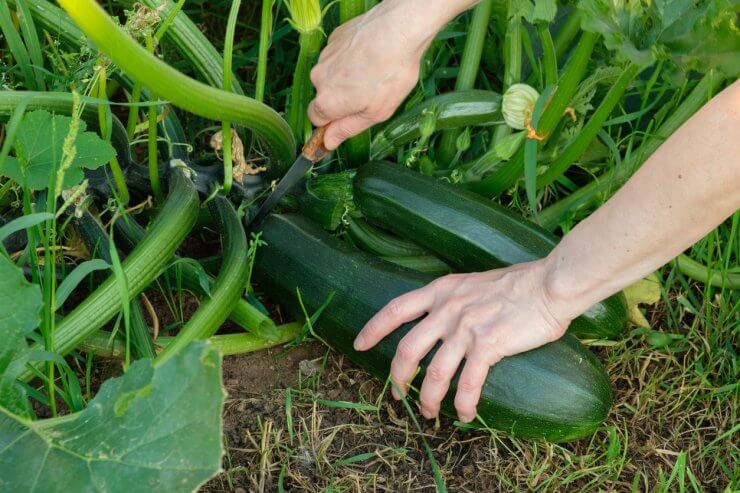
Woman cuts green ripe zucchini from the bush. Organic farming.
3. Zucchini
Zucchini is famously productive, often going from seed to harvest in just 40-55 days. June planting takes advantage of warm soil for rapid germination, while still allowing plenty of time for abundant harvests.
Recommended Varieties:
- ‘Black Beauty’ (50 days) – Classic dark green zucchini, reliable in all zones
- ‘Astia’ (48 days) – Compact bush type, perfect for containers and small gardens
- ‘Cocozelle’ (45 days) – Italian heirloom with distinctive stripes, performs well in zone 4
- ‘Yellow Crookneck’ (55 days) – Adds color variety, more heat-tolerant for zone 6
Pro Tip: Plant three seeds in each mound, then thin to the strongest seedling. To avoid squash vine borers (a common pest in zones 5-6), cover young plants with floating row covers until they flower, then remove for pollination. Alternatively, use a paintbrush to hand-pollinate female flowers (identifiable by the tiny fruit behind the flower) while keeping row covers on. In zone 4, choose varieties with “early” in their name, and consider starting them in peat pots 2 weeks before transplanting.
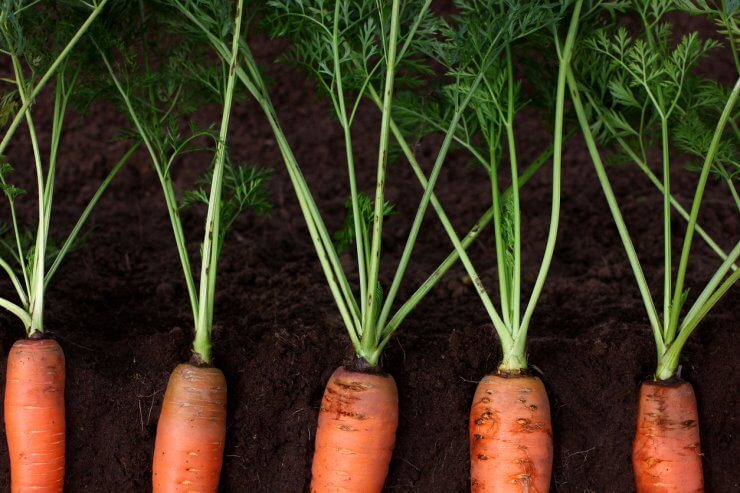
4. Carrots
June-planted carrots mature in the cooling temperatures of late summer/early fall, which concentrates their sugars and makes them exceptionally sweet. With 70-80 days to maturity, there’s still plenty of time for a bountiful harvest.
Recommended Varieties:
- ‘Napoli’ (58 days) – Fast-maturing variety great for all zones
- ‘Scarlet Nantes’ (65 days) – Sweet, crisp variety that performs well in heavier soils
- ‘Little Finger’ (55 days) – Small, sweet carrots perfect for zone 4’s shorter season
- ‘Danvers 126’ (75 days) – Heat-tolerant variety better for zone 6
Pro Tip: For June planting when soil temperatures can exceed 75°F, try the paper towel germination method: Mix seeds with fine sand, spread on a damp paper towel, place in a ziplock bag, and refrigerate for 48 hours before sowing. This breaks dormancy and improves germination in warm soil. Cover newly planted carrot seeds with a board or burlap for 5-7 days to maintain moisture until germination. For zones 4-5, choose faster-maturing varieties that will be ready before fall frosts.
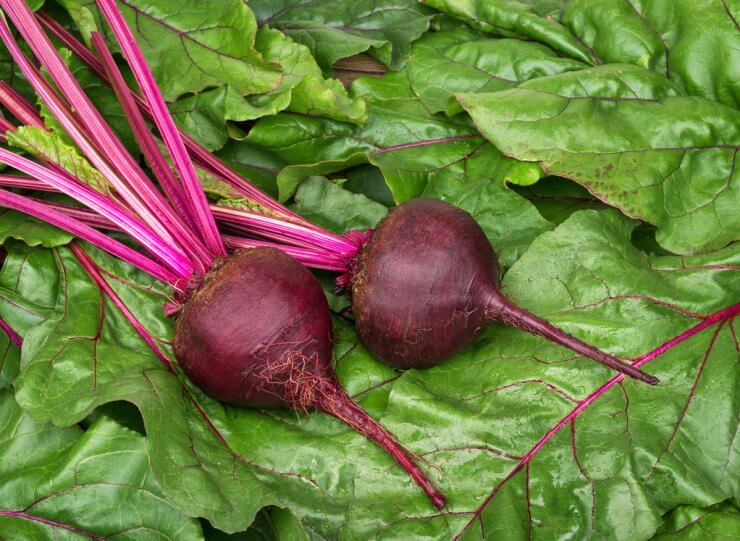
Lutz Green Leaf
5. Beets
Beets are dual-purpose vegetables providing both nutritious roots and tasty greens. With a 50-65 day maturation period, June-planted beets will be ready for harvest in late summer when their flavor is at its peak.
Recommended Varieties:
- ‘Early Wonder’ (48 days) – Fast maturing for zone 4
- ‘Detroit Dark Red’ (60 days) – The classic beet that performs reliably in all zones
- ‘Chioggia’ (55 days) – Italian heirloom with striking red and white rings
- ‘Bull’s Blood’ (58 days) – Grown as much for its gorgeous red foliage as its roots
Pro Tip: Unlike spring plantings, June-planted beets need extra attention to moisture, especially during germination and the first few weeks of growth. Try this trick: After sowing, water thoroughly, then cover the row with a thin board or piece of plywood. Check daily and remove the board as soon as seedlings emerge. This maintains perfect moisture for germination even during June’s heat. In zone 6, provide afternoon shade to prevent bolting in the hottest part of summer.
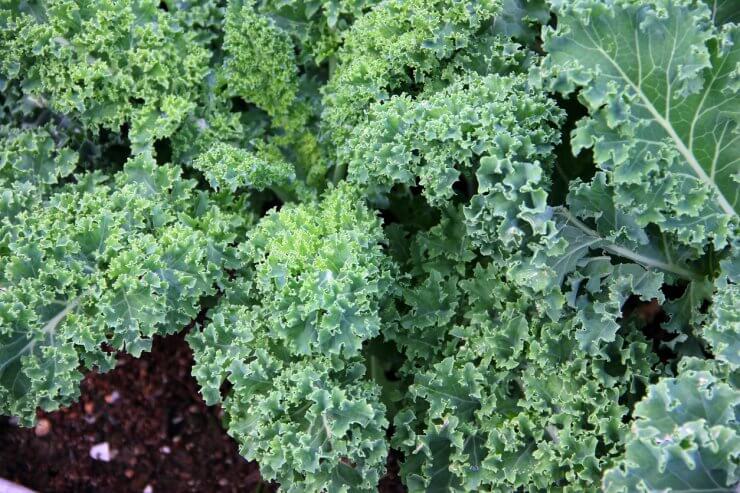
Healthy kale growing in garden
6. Kale
Kale planted in June will mature as temperatures cool in late summer, resulting in sweeter, more tender leaves. With 50-60 days to maturity, kale planted now will provide harvests well into fall, and often survives light frosts.
Recommended Varieties:
- ‘Red Russian’ (50 days) – Tender leaves, cold-hardy for all zones
- ‘Lacinato’ (Dinosaur Kale) (60 days) – Italian heirloom with excellent flavor
- ‘Dwarf Blue Curled Scotch’ (55 days) – Extremely cold-tolerant for zone 4
- ‘Redbor’ (55 days) – Beautiful purple variety that intensifies in color after frost
Pro Tip: June-planted kale can face challenges from flea beetles and cabbage moths. Create a simple DIY protection by cutting the bottom from a paper coffee cup and placing it around seedlings like a collar, pushing it about an inch into the soil. This prevents cutworms and creates a barrier against crawling insects. For zones 5-6, where summer heat can be intense, provide afternoon shade until temperatures begin to cool in late summer.
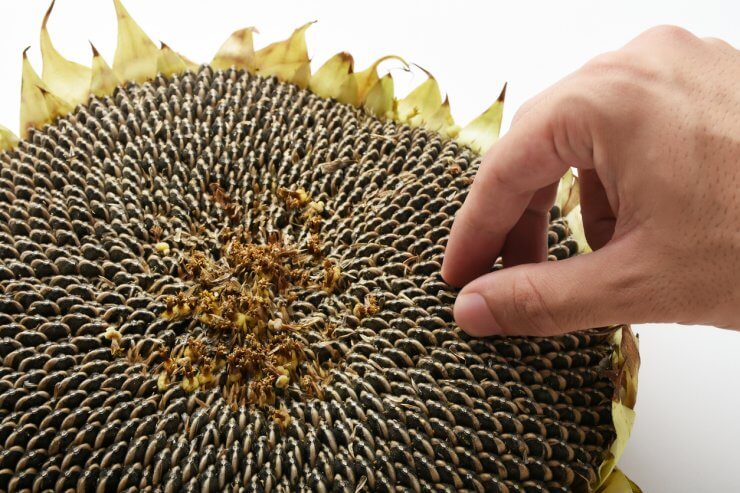
Gardener handpicking sunflower seeds from a dried seed head
7. Sunflowers
Sunflowers planted in June will bloom in late summer, providing a gorgeous display and food for birds as fall approaches. With 70-100 days to maturity, they’ll complete their lifecycle before hard frosts in zones 4-6. These varieties attract pollinators and birds while providing a nutritious garden harvest.
Recommended Varieties:
- ‘Mammoth Grey Stripe’ (85 days) – The gold standard for edible sunflower seeds. Grows up to 12 feet tall with giant flower heads and large, striped seeds perfect for roasting.
- ‘Titan’ (75 days) – Bred for massive seed size, this variety produces some of the largest edible seeds of any sunflower. Plants can reach 12 feet tall with 24-inch blooms!
- ‘Super Snack Mix’ (75 days) – Specifically cultivated for hullability and snacking. Produces lots of plump, easy-to-shell seeds on sturdy, 6–8 foot stalks.
- ‘Sunzilla’ (85 days) – A hybrid known for strong stems, huge heads, and abundant, high-quality seeds. Great for both human and bird consumption.
Pro Tip: To deter birds from eating newly planted sunflower seeds, cover rows with chicken wire until seedlings are 3-4 inches tall. For zones 4-5, choose varieties with “early” or “dwarf” in their names to ensure they complete their lifecycle before frost. In all zones, stagger your planting by sowing some seeds every week for three weeks to extend the blooming period well into fall.

8. Pumpkins
June is actually the ideal month to plant pumpkins for Halloween in zones 4-6. With 85-120 days to maturity, planting in June allows enough time for fruit development before fall harvests.
Recommended Varieties:
- ‘Early Sweet Sugar Pie’ (85 days) – Small pie pumpkin, perfect for zone 4
- ‘Jack Be Little’ (95 days) – Miniature decorative pumpkins
- ‘Connecticut Field’ (110 days) – Traditional carving pumpkin for zones 5-6
- ‘Autumn Gold’ (100 days) – Turns orange early, good insurance for shorter seasons
Pro Tip: For zone 4 gardeners, select varieties with 100 days or less to maturity and use black plastic mulch to warm the soil. In all zones, plant pumpkins in mounds enriched with compost, and once vines begin to run, place a small rock or tile under developing fruits to prevent rot. To direct the plant’s energy to fewer, larger pumpkins, limit each plant to 2-3 fruits by pinching off additional female flowers after that number has set.
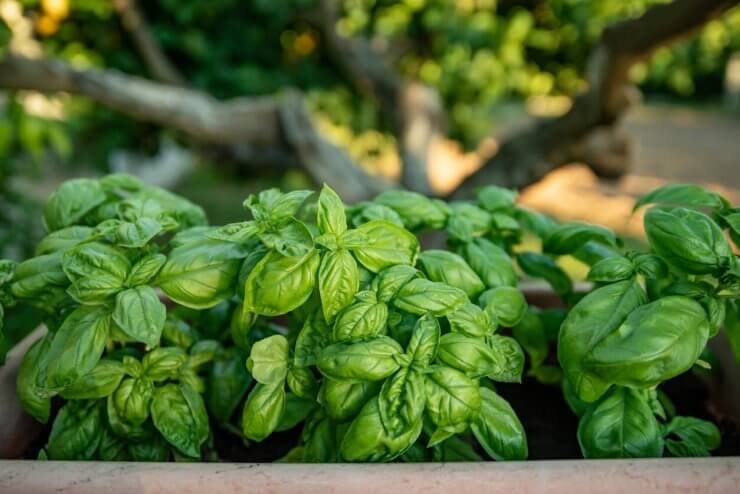
9. Basil
Basil loves the heat of summer, making June the perfect planting time in zones 4-6. With just 30-60 days to usable size, you’ll be harvesting fresh basil for summer recipes in no time.
Recommended Varieties:
- ‘Genovese’ (60 days) – Classic Italian basil, excellent in all zones
- ‘Spicy Globe’ (70 days) – Compact bush form with small leaves
- ‘Fino Verde’ (65 days) – Small-leaved variety more tolerant of cooler temperatures for zone 4
- ‘Thai’ (60 days) – Spicy variety that handles heat well in zone 6
Pro Tip: Basil planted in June will often grow faster than spring-planted basil due to the warm soil and air temperatures. To encourage bushier plants, pinch off the center shoot after the plant has three sets of true leaves. Unlike other herbs, basil prefers to be harvested in the morning when its essential oils are at their highest concentration. In zone 4, plant basil near walls or large rocks that will radiate heat at night, extending your growing season.
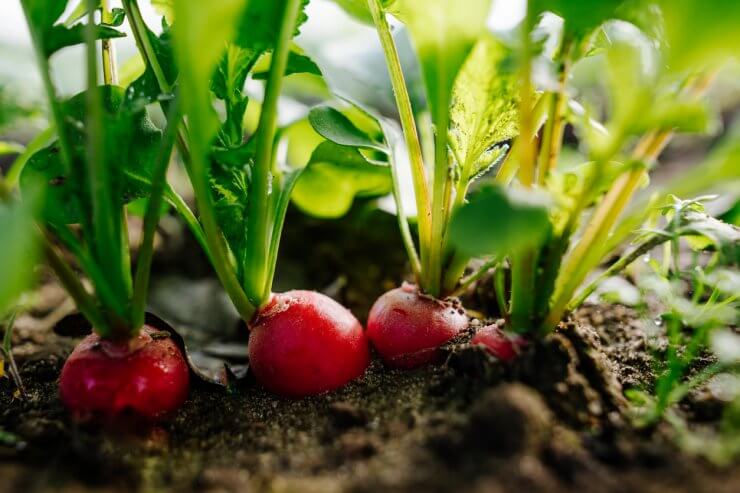
10. Radishes
Radishes are the ultimate quick-return crop, maturing in just 21-30 days. June planting allows you to utilize garden spaces where spring crops have been harvested, providing a quick turnaround for continuous production.
Recommended Varieties:
- ‘Cherry Belle’ (22 days) – Round, red, reliable performer in all zones
- ‘French Breakfast’ (24 days) – Elongated red with white tip
- ‘White Icicle’ (27 days) – Long, white roots with mild flavor
- ‘Watermelon’ (60 days) – Winter radish with green skin and pink flesh, plant these only in zones 5-6 for fall harvest
Pro Tip: Summer-grown radishes can be spicier and more prone to pithiness than spring crops. To moderate this, choose a garden spot that receives morning sun but afternoon shade, particularly in zones 5-6. Water consistently to promote rapid growth. For a culinary treat, don’t discard the radish tops—they make a peppery addition to pestos and can be sautéed like other greens. In all zones, plant radish seeds among slower-growing vegetables like carrots—they’ll mark the rows and be harvested before the other crops need the space.
June Garden Chores for Zones 4-6
Beyond planting, June is a busy month in the garden. Here are some essential tasks to keep your garden thriving:
- Mulch everything! June’s heat can quickly dry out soil, and a 2-3 inch layer of organic mulch will conserve moisture and suppress weeds.
- Set up supports for climbing plants like cucumbers and pole beans before they need them.
- Begin harvesting early crops like lettuce, peas, and spring radishes.
- Stay vigilant against pests—June is when many garden insects become active.
- Water deeply but infrequently to encourage deep root growth.
- Thin seedlings to their recommended spacing for proper development.
- Side-dress heavy feeders like corn and tomatoes with compost or balanced organic fertilizer.
- Prune spring-flowering shrubs after they’ve finished blooming.
- Keep an eye out for disease in humid weather and provide good air circulation.
- Take time to enjoy your garden’s beauty and bounty!
June planting in zones 4-6 is all about striking that perfect balance—getting heat-loving crops in the ground when conditions are ideal, while still ensuring they’ll mature before fall frosts arrive. With these 10 plants, you’ll be setting yourself up for a bountiful late summer and fall harvest.
What are your favorite vegetables to plant in June? Are you trying any new varieties this year? I’d love to hear about your gardening adventures in the comments below!


 Previous
Previous

